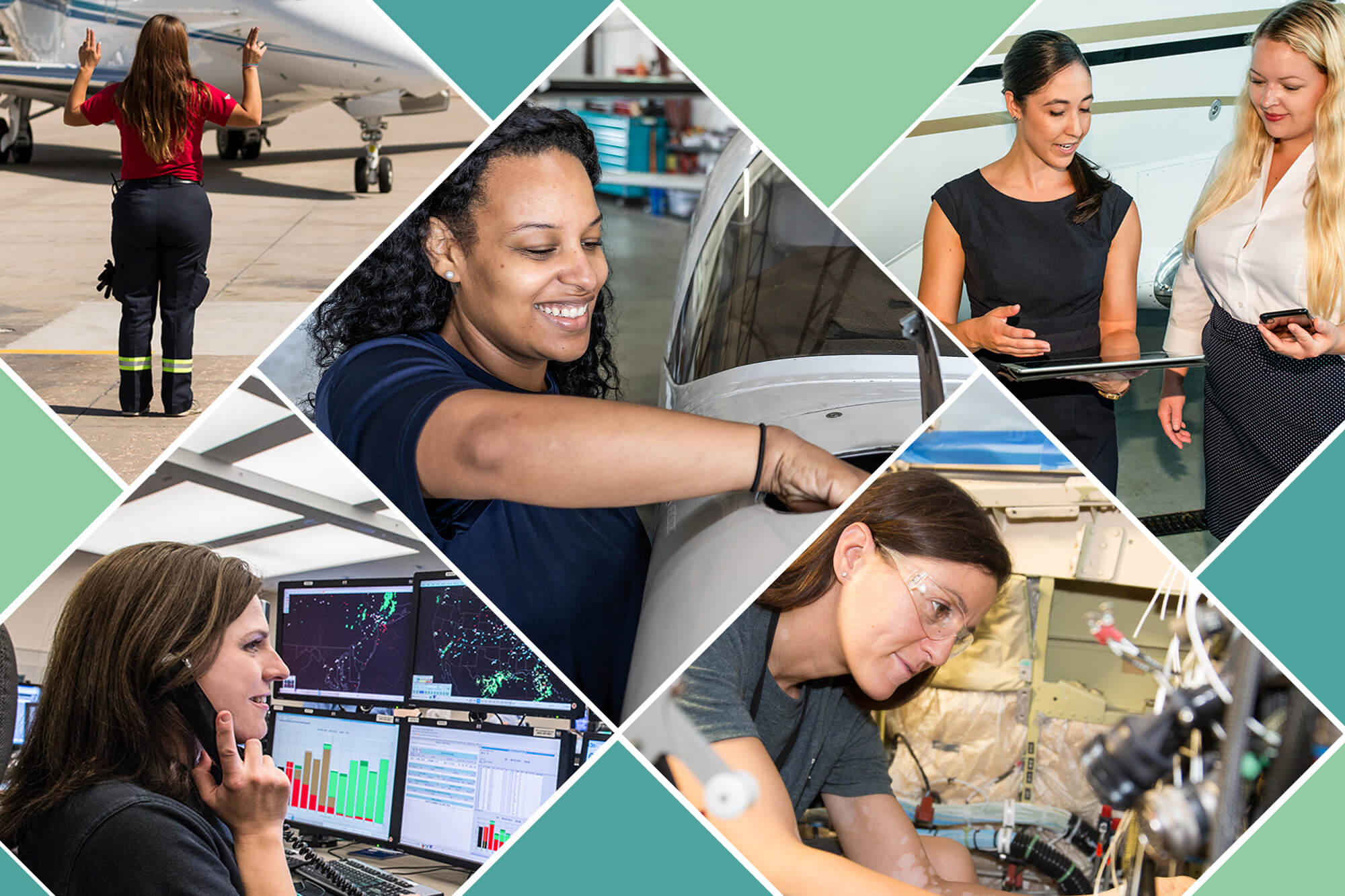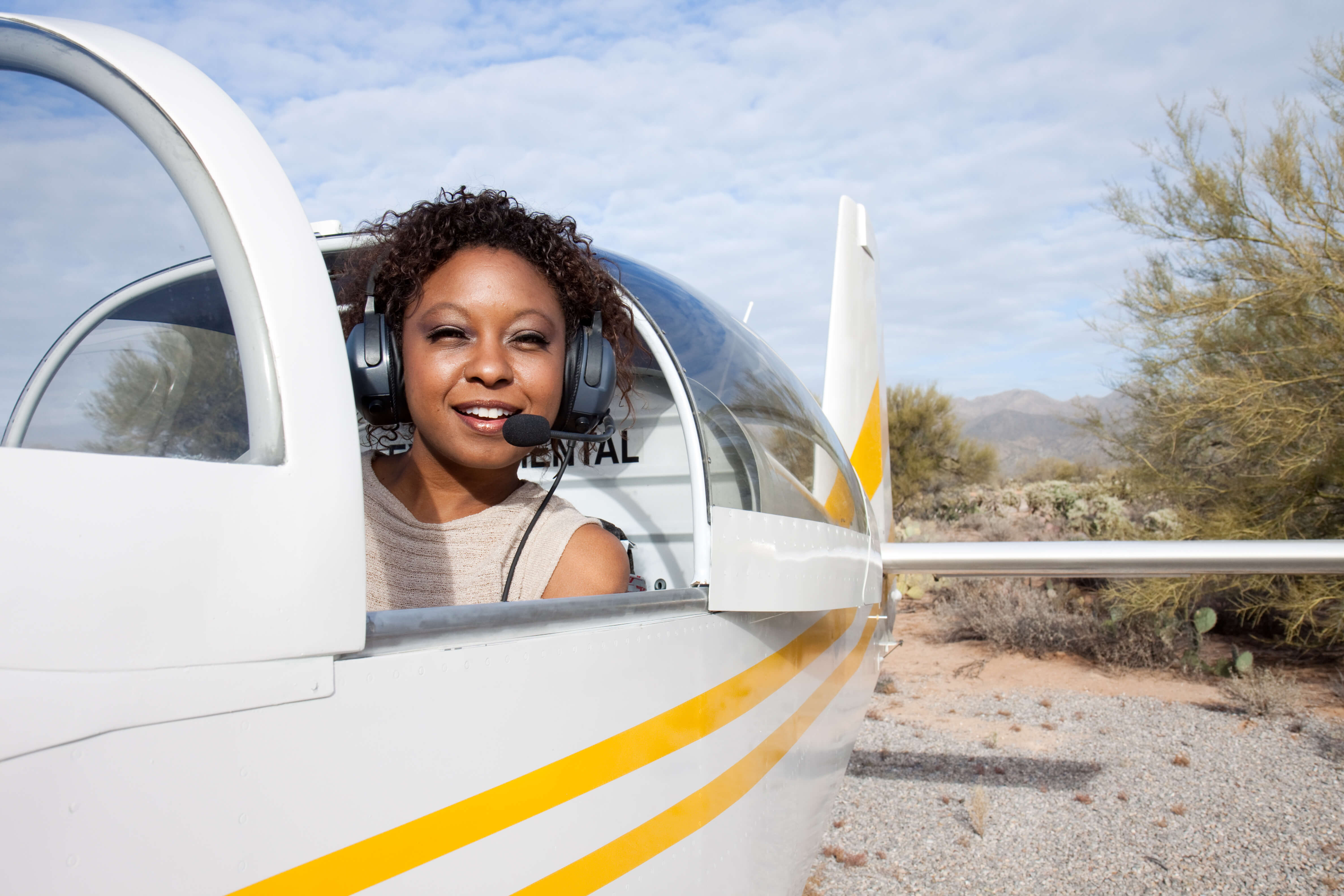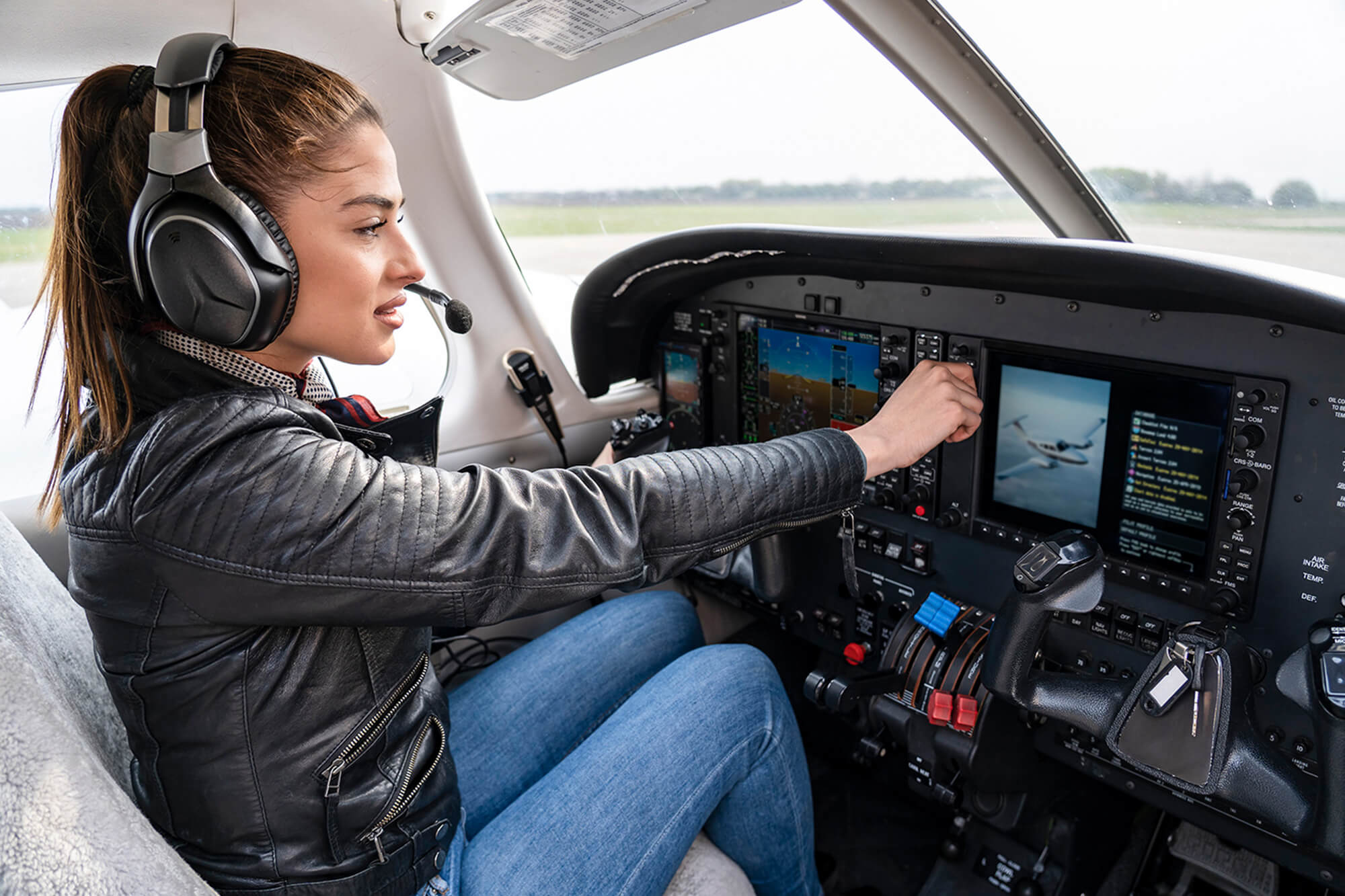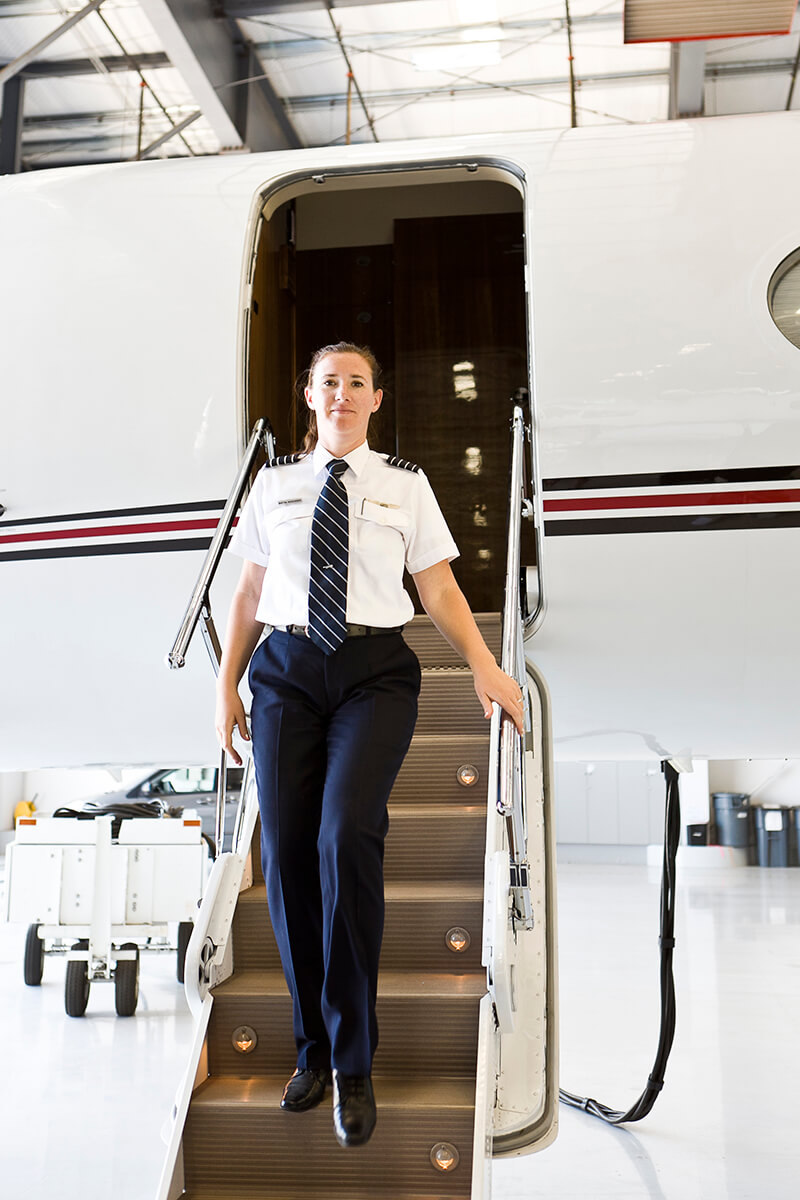

Updated Sept. 9, 2019
Industry leaders provide a roadmap for younger women who are pursuing careers in business aviation.
The past 75 years have seen an evolution in the roles of women in aviation. From the formation of the Women Airforce Service Pilots (WASPs) in 1943 to today, women have gone from being an important but underrated element of aviation in World War II, to now holding key leadership positions.
Today, women in aviation leadership positions want to help the next generation of women succeed. “Regardless of where you are in your business aviation career, it’s important that the generations work together,” said Joanne Barbera, founding partner of Barbera & Watkins, LLC, the Kansas City aviation law firm.
So what advice would today’s women in aviation give to younger professionals (or anyone) just entering the industry and looking to advance?
BE OPEN-MINDED, FLEXIBLE AND VOLUNTEER

Successful women in business aviation recommend that younger women participate in a range of activities and groups.
Tracy Bohaboj – an engineering team lead at Duncan Aviation who started her engineering career through a co-op in a high-altitude balloon program contract-ing to NASA – encourages young professionals to branch out. Sometimes, the next opportunity comes from an unexpected source. Plus, being involved in a variety of activities makes participants more well-rounded.
Sheryl Barden, president and CEO of Aviation Personnel International, also recommends being
flexible. When a career opportunity presents itself, don’t immediately dismiss it because you’re comfortable where you are and you don’t want to move. Comfort can blind you to seeing opportunities.
“The right job is there when it needs you, not when you need it,” said Barden. “You grow and advance your career by taking new opportunities.”
Even mundane assignments can offer educational or networking opportunities. “It might not seem to be taking you anywhere at first, but be persistent, open-minded and creative,” said Barbera.
Also, younger women should consider volunteering because volunteers often benefit from their service by learning new skills, taking on leadership roles, working in a team environment and learning more about the industry.
Opportunities outside the company include industry committees, trade associations and civic groups.

BUILD A NETWORK
No one knows everything. The key is to know who to call when you need a hand. This means building a network.
Find a mentor – or several mentors – who can guide you along the way. Once in a mentorship, younger professionals should uphold their part of the relationship.
“As a mentee, work hard on that relationship,” suggested Barden. “Be vulnerable and open to truly learning, knowing that the person is providing guidance because she’s been there and has learned from her experience.”
A good mentor will help mentees take advantage of opportunities.
“Ask people around you for help,” advised Keren Williams McLendon, CEO of Robinson Aviation, an ATC contractor, who began her career as an accountant, with no plans to work in aviation. “People tend to want to help others.”
Having allies is just as critical in one’s home life. Although experts say a supportive spouse of partner is vital, friends and family also can help out, picking up a sick child from school, for example.
Busy professionals should consider hiring home help, whether it is once-a-week housekeeping, a meal preparation service or caretakers for aging parents. Delegating simple home tasks can relieve some pressure on busy professional people.

FAMILY MATTERS
Some young professional women are hesitant to begin or grow their families, worrying that maternity leave and the subsequent responsibilities will hinder their careers. However, some female leaders say that maternity leave and managing family commitments can make employees more effective.
“I believe women actually gain skills in dealing with these [life] transitions, including maternity leave,” said Barbera. “They are often more organized, more efficient, listen more care-fully and are more thoughtful about their work. Some women grow exponentially in this process. You aren’t the same worker after a maternity leave as you were before.”
But how can women in business aviation maintain work/life balance in such a demanding field?
The struggle isn’t exclusively a motherhood question. All aviation professionals must balance the demands of children, a partner, aging parents and more with professional obligations. Although many of these challenges impact both men and women, traditional gender roles still tend to result in women taking on the majority of tasks related to family care.
Unfortunately, the challenges don’t get easier as women age, and female professionals are more likely to be subject to ageism.
“Women, in particular, have differ-ent experiences in different periods of our lives,” said Barbera. “You have to be prepared to deal with these differ-ent times of your life and use them to your benefit.”

NEVER STOP LEARNING
High achievers are lifetime learners. Many women in aviation have obtained NBAA’s Certified Aviation Manager (CAM) credential and advanced degrees.
“As a woman, you often have to be more qualified than your male peers,” said Robin Eissler, CAM, a sales director with JetAVIVA. “It’s important to focus on professional development like the CAM, which gives recognition to your credibility and credentials.”
“Never stop learning,” said Deb Prosinski, CAM, a flight department director, as well as the recipient of various scholarships. “Take advantage of company tuition reimbursement. Learn the rules of different scholar-ships so you can attend a new conference or course each year.”
CHARTING YOUR CAREER

So how can young women manage their personal lives while climbing the business aviation ladder?
Take jobs that work well for your personal life. For example, Bohaboj changed jobs and relocated to move closer to her extended family.
Prosinski planned a career in hospitality management, but an internship with a flight department changed her career path. After eight years of flying around the world as a flight attendant, Prosinski decided it was time to be home more often, and she became an aviation scheduler, eventually rising to lead her company’s flight department.
Industry veterans say these types of moves – even occasionally accepting a lateral one – can help business aviation professionals balance their careers and personal lives.
PLANTING SEEDS FOR FUTURE PROFESSIONALS
Girls in Aviation Day, a series of nearly 100 separate events hosted by chapters of Women in Aviation International for girls age 8 to 17, attracts approximately 15,000 attendees annually. Activities include airport tower visits, drone flying and inspirational presentations by aviation professionals. The goal is to interest young women in aviation careers.
Maryland’s College Park Aviation Museum, the site of one such event in 2018, attracted dozens of young girls, mostly between 10 and 13 years of age. The museum had an exhibit featuring the uniforms, logbooks and other memorabilia of Elaine Harmon, who served as a Women Airforce Service Pilot (WASP) in World War II. Harmon’s granddaughter, Erin Miller, helped organize the College Park event.
“It’s a numbers game,” said Miller. “You invite enough kids, plant the seed and hope some of them grow. It won’t be all of them, but the more seeds you plant, the more you achieve. You never know who you’re going to reach.”
Miller said events like Girls in Aviation Day give the industry an opportunity to demonstrate the range of jobs available in aviation. “Aviation careers are about so much more than just being a pilot,” declared Miller. “These events let us showcase those


 International Business Aviation Council Ltd.
International Business Aviation Council Ltd.